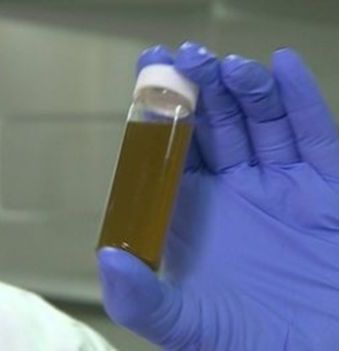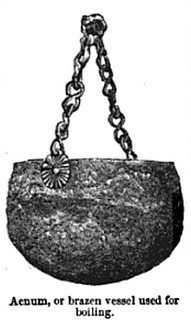Organic heirloom ingredients might just make the difference in modern health and disease problems. The news wire was singing this week about ancient potions for eye infections proving to be highly effective at eradicating MRSA bacteria in lab tests at the University of Nottingham in Britain, which were replicated in the US at Texas Tech University. Exciting news it is, but how fruitful it will be in battling life threatening infections remains to be seen.
It may be that this new natural remedy cures MRSA discovery ushers in a better path to follow in protecting human, animal, and environmental health.
Seriously?
Researchers in Nottingham followed the directions found in what is said to be the oldest medical reference book in existence, Bald’s Leechbook, written before the Magna Carta. Naturally, many are disgusted by the imagined smell of concoction’s ingredients, which they would forget all about if their very life was hanging on a thread. Then there’s the group of authors and comment posters who assume that this medieval witch’s brew couldn’t possibly cure MRSA in humans, these tests were done on mice and skin samples only… but the AncientBiotics team at the University of Nottingham is seeking funding to expand their study and test it on humans.
 The preparation was used as an ointment to cure styes – Staphylococcus aureus eyelash infections caused by the same bacteria that gives you MRSA. The team at the University of Nottingham say it clears this irritating condition up very well too. Still, some people will never embrace a 10th century potion as viable modern medicine. Were it possible for the same effectiveness to be created in a pharmaceutical factory, they would see it as perfectly acceptable. The likelihood of that happening is questionable. It is quite possible that the positive results displayed have a great deal to do with real and not synthetic ingredients.
The preparation was used as an ointment to cure styes – Staphylococcus aureus eyelash infections caused by the same bacteria that gives you MRSA. The team at the University of Nottingham say it clears this irritating condition up very well too. Still, some people will never embrace a 10th century potion as viable modern medicine. Were it possible for the same effectiveness to be created in a pharmaceutical factory, they would see it as perfectly acceptable. The likelihood of that happening is questionable. It is quite possible that the positive results displayed have a great deal to do with real and not synthetic ingredients.
When they first looked at the potion for curing styes (a.k.a. wens back in the day) as translated from Old English, the researchers in Nottingham followed the recipe as closely as possible to duplicate ingredients and tools that were used in the 10th century. This meant sourcing organic vegetative items, which was not that hard for the wine with organic grapes from an heritage vineyard already aged and bottled available. They weren’t so sure about the garlic and leeks, but did the best they could. No article states that the vegetables were heirloom varieties, or even organic, so we can only assume that both were standard grocery store variety ingredients.
It’s Not A Cure
While there are numerous articles and comments online emphasizing that it’s not totally wiping out the deadly bacteria – that 90% efficient is not a cure. Put away your posturing, because nothing exists that does that, and modern medicine proves to be equal to less effective. Microbiologist, Dr. Kendra Rumbaugh from the Texas research team states, ” I was quite skeptical. However, this ancient solution performed better than the current ‘gold standard’ [vancomycin].”
Maybe it would be 100% effective if everything they used were totally organic as it would have been when the leechbook was written. At such a time its most likely that both garlic and leeks were closer to their wild ancestors than what we grow today. The same can be said about getting the gall directly from the cow’s innards compared to grabbing cow bile salts off the closest pharmacy’s supplement shelves… but replicating this ancient ingredient list today calls for a little substitution. Perhaps they should grow their own garlic and leeks using the oldest, purest varieties available in virgin soil far from where any pesticides and chemical fertilizers have altered the soil and water. Also, the beneficial elements in any plant are stronger at the time of harvest than when stored long term or dried. What if they used freshly harvested garlic and leeks to see if it raises the efficiency level? An interesting set of comparison tests!
How Was This Done?
 What exactly are the original directions? Here’s the 1856 translation of how to make this potion:
What exactly are the original directions? Here’s the 1856 translation of how to make this potion:
How they made it at the Centre for Molecular Biology at Nottingham:
- Equal amounts of garlic and another allium (onion or leek), finely chopped and crushed in a mortar for two minutes.
- Add 25ml (0.87 fl oz) of English wine (grapes from 19th century vineyard near Glastonbury).
- Dissolve bovine salts in distilled water, add and then keep chilled for nine days at 4°C.
Every ingredient and noted item in the recipe is essential to recreating the curative results found in four batches and repeated testing. The copper in the brass vessel is purported to be part of the magic, though if it were only the copper, then why wouldn’t the ancient physician have simply boiled the concoction in a copper vessel? Modern brass is a mixture of copper and zinc, but 1000 years ago it could also have included other metals, including silver, which also has antiseptic, antimicrobial, antibacterial, and other beneficial and curative properties. Zinc has immune system boosting benefits too, so it’s very likely that it isn’t just the copper that the recipe benefits from. To know for sure, they would have to prepare it in a copper pot and weigh the results against the brass one. They should also try it with a brass pot whose alloys include some silver. In ancient times they used whatever they had handy, and sometimes these vessels were made from melting down coins that were no longer viable.
Misinformation Alert
Not all bloggers and journalists research their posts past a single article. If they base everything on something published that has errors or assumptions, it starts a trail of poor info. Our research turned up these questions and facts…
1Just about every news item I’ve read about this phenomenal new discovery says it includes ‘part of a cow’s stomach’. Gall or bile comes from the gall bladder.
2Some say that Dr. Christina Lee brewed up the recipe, but she’s the Anglo-Saxon expert in the School of English at Nottingham who brought the potion in Bart’s Leechbook to the attention of the AncientBiotics team in the Molecular Biology department.
3Lots of comments assumes this stuff smells putrid. Not everything beneficial will smell or taste great. Still, Dr. Lee noted that it doesn’t smell awful at all, everyone close to the lab during brewing thought they were making lunch.
Modernization
It won’t be long before the pharmaceutical industry tries replicating this with synthetics they can completely create in a lab. They’ll use vegetables that have been sprayed with pesticides, and raised on a diet of synthetic fertilizers because those you can buy by the trainload cheaper than organics. No heirloom varieties would be chosen either. So much for battling superbugs.
Supersizing, commercializing, and industrializing everything for profit is proving not to be the sharpest knife in the drawer. Superweeds… superbugs clearly point out severe deficits in ‘modern science’.